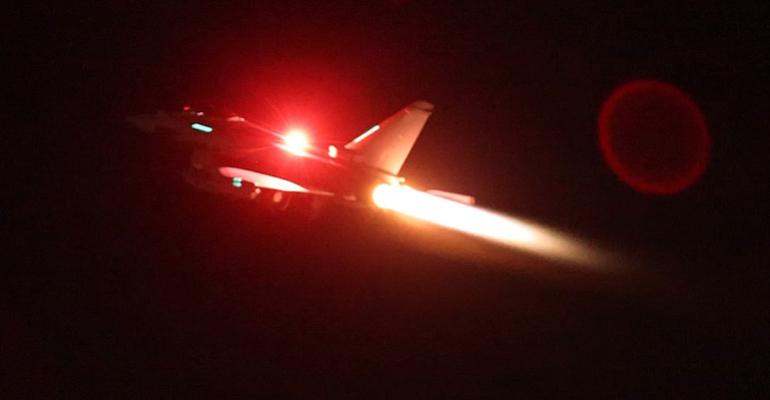US Centcom reported that the anti-ship missile, fired at around 4:45pm local time on 14 January “Was shot down in vicinity of the coast of Hudaydah by US fighter aircraft. There were no injuries or damage reported.”
Since this story was filed Houthi militants have struck an Eagle Bulk Shipping vessel with a missile
It could be argued that the Houthi’s main objective has been achieved by disrupting trade and raising costs, the missiles do not have to find their target, but just the fear of the attack is enough to raise costs, and fuel inflationary pressures in the west and could see a downturn in demand in the east.
Reuters reported today that QatarEnergy had halted its gas tankers from taking the Suez route following the US and UK air strikes last week.
"It is a pause to get security advice, if passing (through the) Red Sea remains unsafe we will go via the Cape," a source told Reuters. "It is not a halt of production."
According to Dryad Global CEO Corey Ranslem following the coalition forces’ attack on Houthi installations there is an expectation that there will be a regional escalation of hostilities and this leading shipping organisations to recommend all vessels pause operations in the region.
If Ranslem’s analysis is correct the situation could mean a steep, further, decline in Suez traffic. Although the level of decline through Suez remains imprecise, experts have said that it is significant, with some 15% of global trade transiting the waterway.
Coalition action “could have declared the whole region as a war zone,” said Global Shippers’ Forum (GSF) CEO James Hookham.
The shift of container shipping, in particular, around the Cape of Good Hope could be prove costly with the extra costs involved in the longer transits only part of the story, the longer transits also mean billions of dollars worth of inventory effectively tied up for longer periods, raising interest costs further, fuelling inflationary pressures.
However, Hookham believes this could be a one-off event with the extra costs for the longer journeys raising rates, but these will be offset in part by lower insurance costs and no Suez Canal charges, and when vessels are added to services, they should return schedules to a more normal weekly timeframe, even though ships are sailing longer distances.
“It’s up to the shipping lines what they decide to do, in terms of transiting Suez, but shippers just want carriers to resume the regularity of services and to get the predictability of arrival times,” said Hookham.
Xeneta Chief Analyst Peter Sand pointed to the massive strains on the supply chains from the conflict which he said would have a far greater impact on smaller shippers who would have difficulty in protecting themselves from the impact.
“Now that ships [and shipping companies] know that the conflict will continue they will not hang about, ships will go around the cape, as the lines will not swing back [to Suez] until the lines can act with certainty that the region is safe,” said Sand.
Copyright © 2024. All rights reserved. Seatrade, a trading name of Informa Markets (UK) Limited.
Add Seatrade Maritime News to your Google News feed.  |

